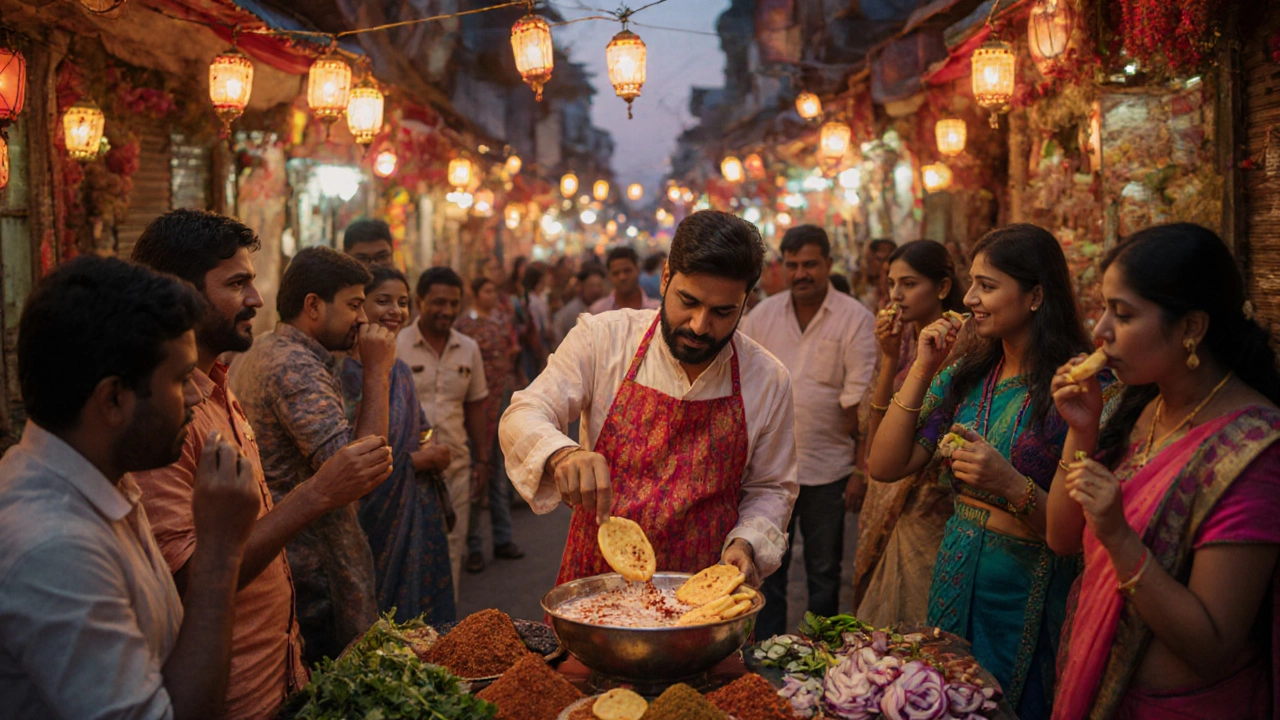Most Common Indian Snack: What You’ll Find Everywhere
If you’ve ever walked through an Indian market, you know the air smells like fried dough, spices, and something sweet. Those smells come from the snacks that people eat every day – the real heroes of Indian eating.
Let’s break down the top snacks you’ll see on any corner. Knowing them helps you pick what to try, and you can even make a few at home without a fancy kitchen.
1. Samosa – The Crispy Triangle
Samosas are deep‑fried pastry pockets filled with spiced potatoes, peas, and sometimes meat. They’re golden, crunchy, and served with mint‑coriander chutney. The trick to a good samosa is a thin crust and a hot oil bath – that gives the signature snap.
Want a quick version? Use ready‑made filo sheets, fill them, fold into triangles, and fry for five minutes. You’ll have snack‑level samosas in under half an hour.
2. Pani Puri – Burst‑In‑Your‑Mouth Magic
Pani puris are small hollow shells (called puri) filled with tamarind water, spicy mashed potatoes, and chickpeas. The magic is in the flavored water – a mix of tamarind, mint, coriander, black salt, and a hint of chili.
To make them at home, buy ready puris, mash boiled potatoes with cumin and chili powder, and blend the water ingredients. Assemble in one bite and enjoy the instant explosion of flavors.
Other everyday snacks include:
- Bhaji (Pakora) – thin slices of onion, potato, or paneer dipped in chickpea flour batter, then fried.
- Vada Pav – a spicy potato fritter sandwiched between buttered pav (bread rolls) with green chutney.
- Dosa – a thin, fermented rice‑lentil crepe served with coconut chutney and sambar.
- Idli – steamed rice cakes, soft and fluffy, perfect with the same sambar and chutney.
- Mirchi Bhaji – large green chilies stuffed with gram flour, fried until crisp.
All these snacks share a few simple rules: fresh ingredients, a hot oil bath or a steaming process, and a side of tangy or spicy sauce.
Why are they so common? First, they use pantry staples – rice, lentils, potatoes, and chickpea flour – which most Indian households already have. Second, they’re quick to prepare, making them perfect for tea time or a rainy evening.
If you’re cooking for beginners, start with bhaji. Mix sliced onions with gram flour, a pinch of turmeric, and a dash of chili. Drop spoonfuls into hot oil and fry until golden. Serve with ketchup or a squeeze of lemon for instant gratification.
For a healthier spin, bake samosas instead of frying. Brush the pastry with a little oil, bake at 200°C for 20 minutes, and you still get that satisfying crunch.
When you travel, keep an eye out for regional twists. In Maharashtra, you’ll find batata vada (potato fritters) served with coconut chutney, while in Bengal, the same idea appears as aloor tikki with mustard oil.
Remember, the best snack is the one you can eat without a fork. Grab it with your hands, dip it in sauce, and enjoy the flavors spilling over.
Ready to try one? Pick a snack, gather a few ingredients, and give it a go tonight. You’ll taste why these bites dominate Indian streets and homes alike.
What Is India's Most Common Street Food? - Pani Puri Explained
Discover why Pani Puri (Golgappa/Phuchka) is India's most common street food, its regional twists, home recipe, and safety tips for enjoying it.
